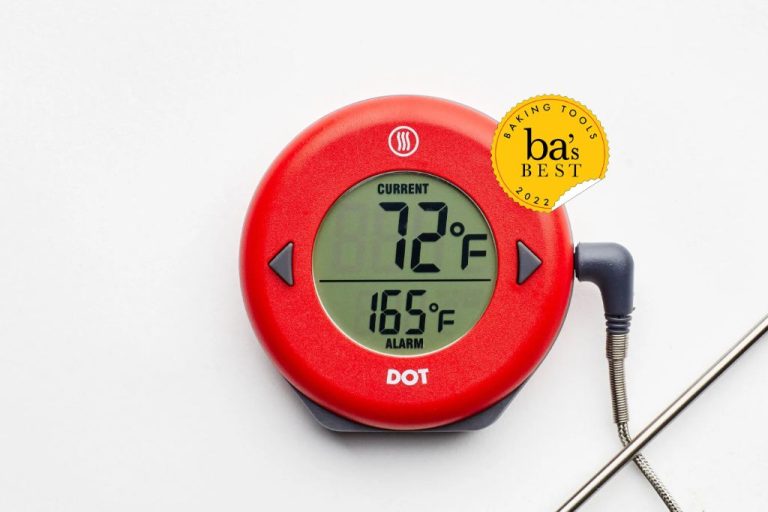What Breaks Down Clay Soil?
Clay soil is defined as soil that contains a high percentage of fine particles and colloidal substances that become sticky when wet (https://www.merriam-webster.com/dictionary/clay%20soil). The tiny size of the particles in clay soil causes it to bind together tightly, making clay soil dense and compact. This density makes clay soil challenging to work with for gardeners and farmers.
However, there are methods for breaking down and loosening compacted clay soil to improve its structure and drainage. This allows plants’ roots to penetrate more deeply and obtain oxygen. In this article, we will explore different techniques for improving the quality of dense, stubborn clay soil.
Why Clay Soil Is Dense and Compacted
Clay soil consists of the smallest soil particles, or the smallest grain size. According to the NYSDEC, clay particles are smaller than 0.002 mm in diameter, making them invisible to the naked eye (https://extapps.dec.ny.gov/docs/administration_pdf/lpsoilstudies.pdf). These tiny clay particles pack tightly together, leaving little space for air and water. This creates a dense, heavy, and compact soil structure that can be challenging for plant roots and air/water to penetrate.
The small size and plate-like shape of clay particles allows them to press together tightly, creating a dense and compact soil. This lack of space between soil particles is what makes clay soil so challenging to work with. The dense compaction reduces pore space and makes it difficult for plant roots to expand, and for air and water to infiltrate.
Organic Matter Helps Loosen Clay
Adding organic matter like compost or manure creates spaces between clay particles, improving soil structure and aeration. As organic matter decays, it releases substances that help bind tiny clay particles into larger clumps. This creates larger pores in the soil for air, water and plant roots to penetrate (1).
Some examples of good organic amendments for clay soil include:
– Compost – Compost introduces beneficial microorganisms and provides nutrients for plants. Mix 1-3 inches into the top 6-8 inches of soil (2).
– Manure – Well-aged manure, such as cow, horse, chicken or other herbivore manures can improve clay structure. Mix in 1-3 inches per year (2).
– Leaf mold – Fallen leaves that have decomposed over 1-2 years add organic material. Mix into soil when tilling (2).
By adding these types of organic matter regularly each year, clay soils will improve in texture, fertility and drainage over time.
(1) https://extension.oregonstate.edu/news/diamonds-clay-soils-are-forever
(2) https://extension.oregonstate.edu/news/diamonds-clay-soils-are-forever
Aerating Clay Soil
One of the most effective ways to improve clay soil is through aeration. Mechanical aeration involves using tools to create small holes in the soil to allow air, water and nutrients to better penetrate the root zone. There are several types of equipment that can be used:
- Core aerators use hollow tines to punch holes into the soil and remove soil cores.
- Spike aerators punch solid spikes into the ground to create air channels.
- Slicing aerators have angled blades that cut into the soil to create slits.
- Subsoiling loosens up compacted layers deep under the surface.
Studies have found that core aeration is the most beneficial for compacted clay soils. The holes left behind act like vertical cracks that allow air and water to infiltrate. Core aeration reduced soil density and penetration resistance while increasing oxygen levels (https://www.easydigging.com/gardening/articles-g/improve-clay-soil.html).
It’s recommended to aerate clay soil in the spring or fall when the soil is moist but not saturated. Aerating when the soil is too wet can damage soil structure. The holes made by aerating will gradually close up over time, so it needs to be done periodically to keep clay soil loose.
Growing Deep Rooted Plants
Certain plants with deep taproots and thick roots can be useful for breaking up compacted clay soil over time. As the roots grow downwards and expand, they create channels and spaces in the soil. Some examples of deep rooted plants that can help bust clay include:
Artichokes (Cynara scolymus) develop sturdy taproots that can penetrate compacted clay soil. As a perennial, artichokes remain in place for years, giving their roots time to thoroughly permeate the soil.
Prairie dropseed grass (Sporobolus heterolepis) has roots that grow to over 6 feet deep, creating deep fissures in dense clay. This drought-tolerant grass thrives in poor soils.
Chicory (Cichorium intybus) sends taproots down a foot or more, loosening up heavy soils. The light blue flowers also attract pollinators.
Trees like maples, ashes, oaks, and poplars grow deep anchoring roots to stabilize themselves. Over many years, their extensive root systems help condition and aerate the soil.
As these deep roots grow downwards, they fracture compressed clay layers, open up spaces, improve drainage, and bring oxygen deeper into the soil. This facilitates better root growth for other plants with shallower roots.
Avoiding Too Much Fertilizer
Excessive fertilizer salts can accumulate in clay soils because the dense soil prevents leaching. As fertilizers build up, they can start to burn plant roots (1). To avoid this, it’s important not to over-fertilize clay soils. Organic fertilizers such as compost, manure, and bone meal are recommended for clay. These organic sources break down slowly and don’t overwhelm the soil with salts.
According to Pennington, “Applying 1- to 2-inches of compost or other organic matter each year meets the nutritional needs of most landscapes” (2). The organic matter feeds soil microbes and releases nutrients gradually. An added benefit is that organic fertilizer also helps lighten heavy clay soils.
Sources:
(1) https://katekfertilizers.com.au/improve-clay-soil/
(2) https://www.pennington.com/all-products/fertilizer/resources/how-to-improve-heavy-clay-soil
Improving Drainage
Clay soil is prone to poor drainage because the tiny, flat particles of clay easily adhere together, forming a dense, compacted mass that water struggles to penetrate. As water accumulates, it fills spaces between soil particles that plant roots need for growth and gas exchange. This is why drainage is a key focus when addressing clay soil issues.
Installing drainage systems like French drains or drainage tiles can help. French drains create “channels” filled with gravel in the soil to collect excess water and direct it away from plantings. Drainage tiles perform a similar function but use perforated plastic pipes instead of gravel. Proper drainage installation requires digging trenches around 12 inches wide and at least 8-12 inches below the soil surface, with a slight downward slope to facilitate water flow. Make sure to place drainage systems at least 5 feet from the foundation of buildings. See this Fine Gardening article for more tips on constructing drainage systems in clay soil.
Using Cover Crops
Cover crops can help break up dense, compacted clay soil through their extensive root systems. As cover crop roots grow, they create channels in the soil for air, water and nutrients to penetrate into. Over time, the decaying roots add organic matter to the soil. Popular cover crop choices for clay soil include:
Clover – Red clover in particular has a deep taproot that penetrates compacted soils (https://blog.southernexposure.com/2023/10/cover-crops-improve-clay-soils/). Its nitrogen fixing ability also boosts soil fertility.
Winter Wheat – The sturdy, fibrous roots of winter wheat help loosen heavy clay soil while scavenging nutrients from deep in the soil profile (https://www.gardeningknowhow.com/edible/grains/cover-crops/cover-crops-for-clay-soil.htm).
Buckwheat – Buckwheat has an extensive fine root system that permeates clay soil. Its quick growth helps suppress weeds.
Other deep rooted options like alfalfa and fava beans can also help break up compacted clay when planted as cover crops.
Tilling at the Right Time
There’s a fine line when it comes to tilling clay soil at the right time. Tilling when the clay is too wet will damage soil structure by compacting it further. Plowing or tilling wet clay soil results in smearing and compaction [1]. The best time to till is when the clay is slightly dry but still breaks apart easily in your hand.
Allow the clay to dry out a bit first before tilling. Test the soil’s readiness by grabbing a handful of soil and forming it into a ball. If it crumbles easily, the moisture content is just right for tilling. If it forms a solid, sticky mass that won’t break apart, it’s still too wet. Wait a few days until the clay soil dries out more before tilling. Tilling only when the clay soil has dried slightly will prevent damaging the soil structure further.
Conclusion
Overall, there are multiple strategies available for breaking up and improving heavy clay soil. Some of the key ways covered in this guide include adding organic matter such as compost, bark, leaves, sawdust or manure; aerating the soil to improve drainage and introduce air; growing deep-rooted plants that can penetrate the dense clay; avoiding over-fertilizing which leads to soil compaction; utilizing cover crops and proper tilling techniques; and applying soil amendments like gypsum or limestone to help change the chemical structure of clay.
Properly managing clay soil takes time and effort, but the results are well worth it. Good soil structure and drainage leads to healthy plant growth and makes gardening and lawn care much easier. The tips in this guide aim to equip readers with a plan to rehabilitate and get the most out of clay soil over the long-term. With knowledge of soil science and consistent care, clay soil can be transformed into fertile, productive ground for growing beautiful landscapes.



